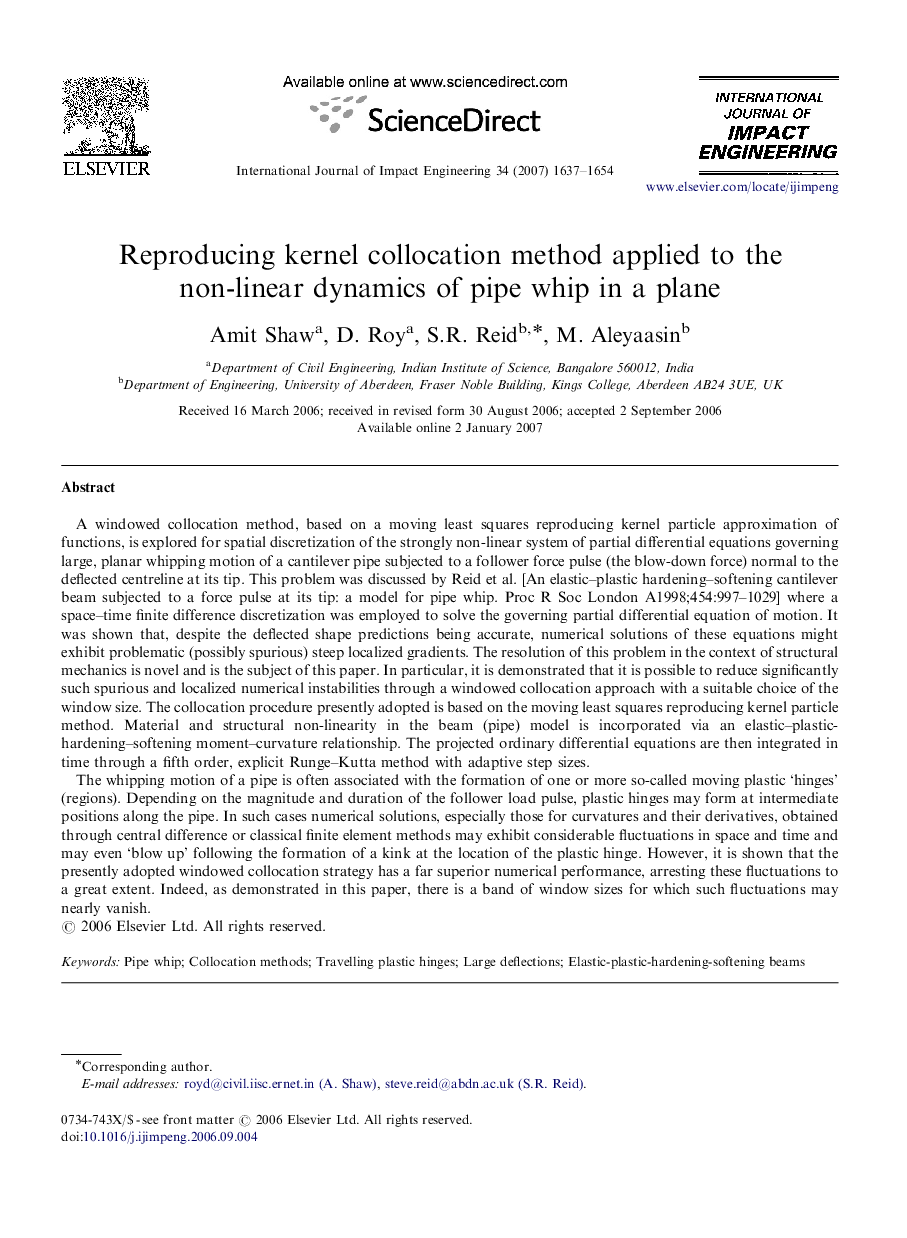| کد مقاله | کد نشریه | سال انتشار | مقاله انگلیسی | نسخه تمام متن |
|---|---|---|---|---|
| 777204 | 1464159 | 2007 | 18 صفحه PDF | دانلود رایگان |

A windowed collocation method, based on a moving least squares reproducing kernel particle approximation of functions, is explored for spatial discretization of the strongly non-linear system of partial differential equations governing large, planar whipping motion of a cantilever pipe subjected to a follower force pulse (the blow-down force) normal to the deflected centreline at its tip. This problem was discussed by Reid et al. [An elastic–plastic hardening–softening cantilever beam subjected to a force pulse at its tip: a model for pipe whip. Proc R Soc London A1998;454:997–1029] where a space–time finite difference discretization was employed to solve the governing partial differential equation of motion. It was shown that, despite the deflected shape predictions being accurate, numerical solutions of these equations might exhibit problematic (possibly spurious) steep localized gradients. The resolution of this problem in the context of structural mechanics is novel and is the subject of this paper. In particular, it is demonstrated that it is possible to reduce significantly such spurious and localized numerical instabilities through a windowed collocation approach with a suitable choice of the window size. The collocation procedure presently adopted is based on the moving least squares reproducing kernel particle method. Material and structural non-linearity in the beam (pipe) model is incorporated via an elastic–plastic-hardening–softening moment–curvature relationship. The projected ordinary differential equations are then integrated in time through a fifth order, explicit Runge–Kutta method with adaptive step sizes.The whipping motion of a pipe is often associated with the formation of one or more so-called moving plastic ‘hinges’ (regions). Depending on the magnitude and duration of the follower load pulse, plastic hinges may form at intermediate positions along the pipe. In such cases numerical solutions, especially those for curvatures and their derivatives, obtained through central difference or classical finite element methods may exhibit considerable fluctuations in space and time and may even ‘blow up’ following the formation of a kink at the location of the plastic hinge. However, it is shown that the presently adopted windowed collocation strategy has a far superior numerical performance, arresting these fluctuations to a great extent. Indeed, as demonstrated in this paper, there is a band of window sizes for which such fluctuations may nearly vanish.
Journal: International Journal of Impact Engineering - Volume 34, Issue 10, October 2007, Pages 1637–1654